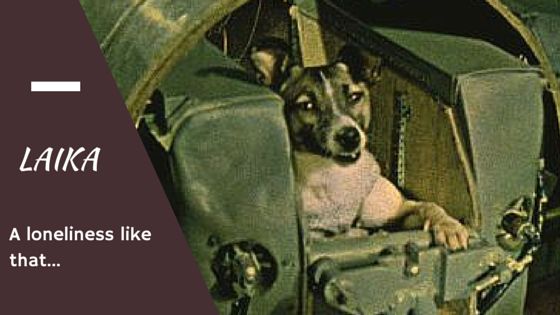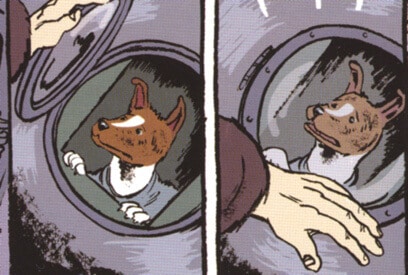
Take all the space programs and the satellites and the celestial conquests, this lad still thinks of Laika, the first animal to orbit the earth. Picked from the streets of Moscow in 1957, the then three-year-old Laika trusted humans, heart-breaking as it is – the caretakers she so lovingly trusted had different plans for her.
Many a time I wonder if Laika had a choice. If only someone ever asked her if she wanted to be the first dog in space? What if she was content with her place on Earth?


Laika come home…
Decades later at a Moscow conference Oleg Gazenko, who worked closely with Laika during her training, regretted sending her to space. He had also taken Laika home with him to play with his children, to give her a good send-off.
“The more time passes, the more I’m sorry about it. We did not learn enough from this mission to justify the death of the dog.”
Laika probably got to see space, unable to comprehend what it was as the heatshield went loose and the cabin heated up to 90 degrees Celsius causing her to die of overheating and stress. It took 109 minutes to get her to orbit, and she died anywhere between 5 to 7 hours after departing. Laika probably would have been unconscious or at least not aware enough of her condition before dying of heatstroke.
Undergirding my mind off this train of thoughts, this I could never do. The alternative ending to Nick Abadzis’s graphic novel Laika heralds hope that someday our cries of Laika come home would be answered. Perhaps this is why I look at the stars.

“For once, it seems there’s nothing to worry about…
… for the time being.
Of course, nothing lasts.
And why worry about that?
One must learn not to.Every day, every moment is a frontier to a country that, once crossed, can never be returned to.
Most of the time, we don’t notice.
Which is just how it should be.
The secret…
… is not to worry.You can’t go back.
Although, those you leave behind…
… will still think of you.
Most of the time, we don’t notice the small, gradual changes…
… only the sudden, unexpected ones.
… But once you understand that nothing lasts…
… everything’s alright.After all, something always comes along that changes everything.
And, once you realize this, you find that you’re no longer imprisoned by this truth…
… but freed by it.”― Nick Abadzis, Laika
Belka and Strelka, the Soviet Union dogs who were among the first animals to go into orbit and return (1960).
— Abhishek Joshi 👨💻🐶 (@kaalicharan) May 8, 2020
Space race took multiple lives, many of them were innocent animals – like Laika… https://t.co/mPVICeh40s 🚀🐕 pic.twitter.com/AzUlk1FRcP
Laika was the inspiration for Marvel’s Cosmo, the space dog
The Marvel Universe reimagined Laika as Cosmo, a former test animal of the Soviet Space Program (СССР), launched into Earth’s orbit as part of an experiment. Lost in space, mutated by cosmic rays, Cosmo gets powers like telekinesis and telepathy.

He frequently appears in the Guardians of the galaxy comic books and is the security chief of the space station Knowhere.
“That does it. That enough. No more Mr. Nice Dog. Now Cosmo will hurt everyone.”
~Cosmo
Many a time I wonder if Laika had a choice.
If only someone ever asked her if she wanted to be the first dog in space? What if she was content with her place on Earth. https://t.co/mPVICeyFp2
— Abhishek Joshi 👨💻🐶 (@kaalicharan) July 3, 2020
There are statues and stamps honouring Laika’s ultimate sacrifice to the future of space travel. Guess the very fact that schools still talk of her, and students love her remains her everlasting legacy. Up with the stars, the little good girl, resting in peace.
Or better yet.. why not use one of the hardened criminals, having a leisure at our expense in those jails..
To achieve our feats, we always have put others in trouble.
Abhishek, atleast you wrote an article to tell people about this.
Laika, sorry won’t mean anything here. We cannot imagine what you must have gone through alone. Apologies on behalf of the entire mankind.